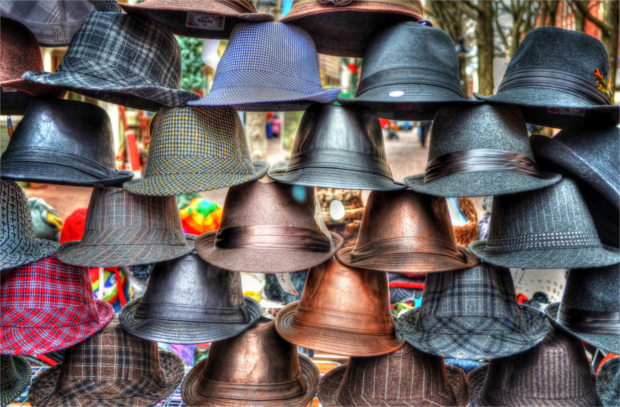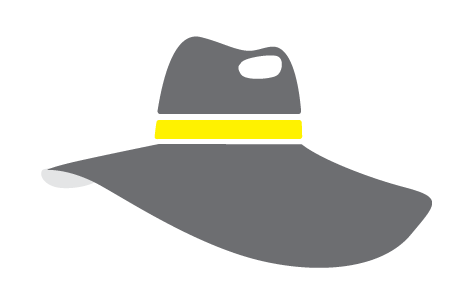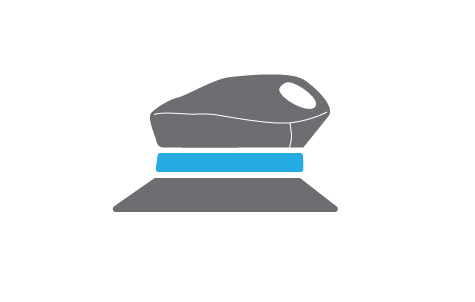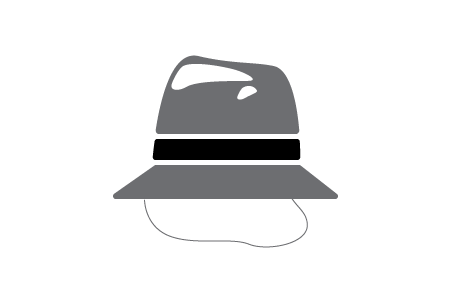Edward DeBono’s “Six Thinking Hats”
Website Editor • February 19, 2020
Edward DeBono’s “Six Thinking Hats” offers a framework for exploring new ideas, developing existing ideas or finding solutions to a problem.
The framework is based on the premise:
- that we think in a variety of ways and
- that by thinking in different ways about a topic we can explore multiple aspects of it and
- potentially become better informed about that topic.
With greater perspective, we should be able to make better, more informed decisions and draw more informed conclusions.
A 6 Hats Thinking session is normally run as a facilitated group exercise in a relaxed environment with a goal of developing an idea or making a decision.
Thinking is isolated into six modes and each mode is attributed a colour—or coloured hat as a metaphor as follows:
- Blue hat thinking represents organisation and goal setting.
- Green hat thinking represents curiosity and creative thinking.
- Red hat thinking represents feelings, instincts and emotional thinking.
- Yellow hat thinking represents optimistic and positive thinking and is about identifying benefits
- White hat thinking refers to clear information and facts.
- Black hat thinking represents discerning, logical or critical thinking.
During a session, a limited time is allocated to exploring and discussing a topic or idea under each of the modes of thinking. Actual hats, or other appropriately coloured props if available are often used as a visual cue.
Hats may be used in a variety of sequences depending on the goals of the session. Blue is often used first in order to organise the session, establish the goals, set out the ground rules and determine the sequence.
All participants must ‘wear’ the same coloured hat at the same time i.e. during the time allocated to ‘red-hat thinking’ participants may only discuss the topic in relation to how they feel about it and how it affects them emotionally.
During ‘yellow hat thinking’, participants may only talk about how an idea or project can be moved forward and progressed, and may not talk about any negatives or pitfalls until the black hat is produced.
The facts-based, critical or negative thinking hats are reserved for the end of the session
(i) so that there is the greatest opportunity to express and explore ideas positively beforehand and (ii) in order to focus on converging, reining in ideas and narrow them down so the goals of the
meeting can be achieved.

Benefits of the Six Thinking Hats Process
- Everyone is encouraged to participate.
- It provides a goal-based, progressive structure for brainstorming.
- It challenges participants to think from a variety of perspectives and to identify ‘all angles’ of an issue.
- The structure and ground-rules help reduce some of the psychological constraints and hang-ups people have about ideating in a group—especially in relation to emotional thinking.
- It encourages people to think constructively rather than critically when constructive thinking is required. ...to defer judgement until a later stage...
- The goal with this process is to be constantly productive, to be constantly adding information.
- It can be lots of fun—especially if these and other props are introduced helps keep an atmosphere relaxed. A relaxed atmosphere in turn promotes creative thinking.
As with many group related events, a session will work best with a good facilitator who makes all participants feel comfortable.
Articles

The United Nations has described the disruption to education caused by the pandemic as ‘unparalleled’. At the virus’ worldwide peak in April, it is estimated that over 90% of all enrolled learners, from kindergarten to bachelors and beyond, had their education affected by school closures and the pandemic (UNESCO). For many university students and older children, they have had to adapt quickly to online learning. They can keep in touch with their peers and teachers online and continue their studies, albeit in a highly modified way. As challenging as this may be, this experience will help equip them for a future that is increasingly online. For parents of younger children, they are assuming a new role: their child’s home school teacher. This is in addition to their usual childcare and household duties, their work responsibilities and often emotional and financial worries caused by the pandemic. Stressful? Yes. The good, and somewhat surprising, news? The experts advise that you don’t teach your children - at least not in the way you might expect.

If the recent outbreak of Covid-19 has taught us anything, it's that many adults do not wash their hands effectively. It has never been more important that we support our children to develop good personal hygiene to keep themselves and our families safe. This seemingly easy task can be very difficult for children with fine motor skill difficulties. In this article, we explore some ideas to support your child with hand washing.

Lockdown has brought the digital future into the now. Online shopping, entertainment, education and more have moved from the periphery to the mainstream to, in many cases, the only option. With the necessity of social distancing looking to continue for many months, it appears that this rapid digital revolution is here to stay. This means that life as we know it, in most of its sectors, has changed forever. In order to survive, businesses are having to adapt rapidly, embrace technology and look to the future. Architecture is no exception. There has been a widespread adoption of technology and VR over the past few months in response to the lockdown across all of society. Elderly grandparents who were once resistant to adopt new technologies talk of “Zooming” and have started video chatting with their family members to combat loneliness. Art galleries that were once considered stuffy or pretentious are now pioneers in VR technology, with Google Art & Culture offering tours of London’s National Gallery or the Musee D’Orsay in Paris. These virtual tours deliver art in a dynamic new way that can be far more engaging than regular photos. Critics have applauded the panoramic and immersive views of gallery building and exhibitions which work well for rendering of 2 dimensional art, however impressions of sculpture is somewhat lacklustre. With VR technology, users can enjoy a truly immersive experience in the comforts, and safety, of their own home. The COVID-19 pandemic has served as an accelerant for the arts and entertainment industries to embrace VR.









